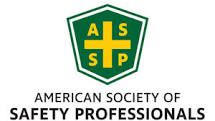The Hidden Cost of Ignoring Safety at the Workplace - FIRST, VERIFY
It is common knowledge that job-related injuries are expensive, due to medical expenses, lost workdays and insurance costs. But did you know that as much as 90% of the total cost of a workplace injury or illness is a hidden cost?
Those hidden costs could include replacing damaged tools and equipment, overhead costs incurred when work was disrupted, lost orders or billing opportunities, failure to meet production deadlines, and the cost of bad publicity.
The scope of the total cost is eye-opening. According to NIOSH, “A recent economic analysis suggested that traumatic occupational deaths and injuries cost the nation $192 billion annually, including direct medical costs and indirect costs such as lost wages and productivity.”
Such statistics force us to delve deeper into the direct and indirect costs and see why preventing workplace injuries and illness makes sound fiscal sense.
Health and Safety: Direct Costs
OSHA cites the astounding figure of nearly a billion dollars per week for direct workers’ compensation costs.
OSHA’s list of direct costs includes workers' compensation payments, medical expenses, and costs for legal services.
According to the 2016 Liberty Mutual Workplace Safety Index report, the top five most disabling injuries and related direct costs were:
- Overexertion, such as “lifting, pushing, pulling, holding, carrying, or throwing” ($15.08 billion)
- Falls on the same level ($10.17 billion)
- Falls to a lower level ($5.40 billion)
- Struck by object or equipment ($5.31 billion)
- Other exertions or bodily reactions ($4.15 billion)
Health and Safety: Indirect Costs
OSHA’s list of indirect costs includes training replacement employees, accident investigation and implementation of corrective measures, lost productivity, repairs of damaged equipment and property, and costs associated with lower employee morale and absenteeism.
Add to that list the cost of buying replacement equipment if the damages cannot be repaired. Other hidden costs are hiring replacement workers, providing benefits for replacement workers, and the fact that the company is now paying twice the benefit costs for one position. These costs are not typically factored in when calculating the costs of workplace injuries or illness.
There are even more potential hidden costs: the effect on the bottom line if the injured worker is in sales and has built up a strong rapport with a sizable number of customers; a potential surcharge on insurance fees if the company now is a higher risk; and non-compliance fees or even civil or criminal penalties.
Taking an injured worker off the job following an accident often means losing some critical expertise. There is, of course, the cost of training a replacement employee. But it goes beyond that.
Costs to Society and the Company’s Reputation
Besides just the direct and indirect costs, the costs both to society and to a company’s reputation are also important. While these are difficult to delineate, they ultimately play a role in the total cost of workplace injuries and illnesses.
When one worker is injured or becomes ill on the job, the entire family is affected as wellꟷin multiple ways. That situation generates new, unfunded costs, and other strains for the family.
Now, consider a scenario in which multiple workers from the same company are injured or become ill within a similar time frame. What are the potential ramifications? Here are just three:
- A strain on local resources for example, caretakers, medical specialists, neighbors lending a hand.
- Potential new hires shying away from accepting positions at that company.
- Consumers hearing about workplace injuries and deciding to avoid that company’s products or services.
Eventually, multiple workplace injuries or illnesses at the same company will hit the company’s bottom line in ways that may not have been anticipated. For example, morale is bound to dip when an incident takes place, but the costs associated with this are difficult to measure.
Prevention to Boost Your Bottom Line
The business case for boosting workplace safety is clear. To help you calculate your company’s potential cost savings, you can access OSHA’s interactive "Safety Pays" program.
Additional assistance calculating the health and safety-specific cost savings for your company when you boost worker safety is available through the National Safety Council.
In conclusion, it is very clear that with arobust workplace safety program it will be possible to prevent the majority of workplace accidents. However, no matter what systems are in place, unexpected occurrences and human error can compromise the safety of your workers. But investing in a cohesive, site-specific, well-run safety orientation program, like the one FIRST, VERIFY offers, is very critical for maintaining safety at the workplace.






